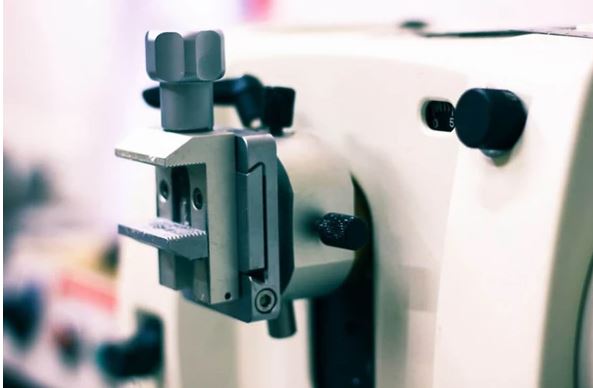
In today’s post we will confront some of the common microtomy problems you could run into, and what you can do to troubleshoot them.
The Ribbon is Not Forming
The most common reasons for the ribbon not forming are either the wax is too hard, or the knife is at the wrong clearance angle. If it’s the knife, you just have to adjust the angle. If you think it may be the wax, take a look at the melting point of your paraffin. If you’re having the same issue with all of your blocks, it may be worth trying a different wax, but if its just some of your blocks, try to breathe on the block to warm it up, don’t put it on ice, or cut at room temperature.
Compression
Compression is when the section comes out smaller than the block you started with. Like a lot of microtomy problems, this could be because of a dull blade, in which case you can move to a different area on the blade or change the blade. It could also have to do with the wax being too soft. If that is the case, you can ice the block or use a harder paraffin. Icing the block will also help if the problem is just dense tissue.
Ribbon Comes Off in a C
This may not look like a perfect “C” but it is referring to when the ribbon is curving as it comes off. There are several different reasons why this can happen. A part of your block may not be parallel to the knife, in which case you can use a razor to trim it. A part of your blade may also be dull causing compression of the block in the dull area but not the sharp area. It may also just be a case of the tissue being more dense in one area.
Sections Roll Up on Knife Edge
This refers to a scenario where instead of coming off the block as a square, the section rolls up. This can be due to the knife being too dull, but seemingly counter intuitively, it can also be due to the knife being too sharp. Otherwise it is likely that the section is too thick. This will happen commonly on anything larger than 10 microns. You can make it a thinner section or use a lower melting point wax which will be softer.
Thick/Thin Sections
This is something that you will notice once the sections are in the water bath. There will be differences in the sizes of the sections and differences in the shades of white of the sections. This will generally be because something is loose on the microtome and you want to tighten all of the levers and knobs. It could also be from too small of a clearance angle or because the wax is too soft.
You can also have a single section that has a thick and thin part to it. This is potentially because the tissue is too dense in tissue like cervix or uterus that have a lot of muscle. It can also happen when your tissue is over-processed or your wax is too soft.
Knife Line
This is a split in the tissue caused by nicks in the knife edge. Where the nick is you will see a knife line. If you have a line that goes through the whole section, you want to move your blade. Other times it can be caused by something hard in the tissue like calcium in breast tissue. Those knife lines will actually direct the pathologist to what they are looking for but other knife lines can be caused by keratin or sutures.
Tears
This can come from pulling on the tissue too hard to detach it. It can also split along tissue lines like a blood vessel which can be caused by the water bath being too hot or leaving it too long in the water bath.
Looking for more of a microtomy review? Check out NSH's HT Prep Course which contains webinars covering histology essentials like fixation, microtomy, embedding, and staining.